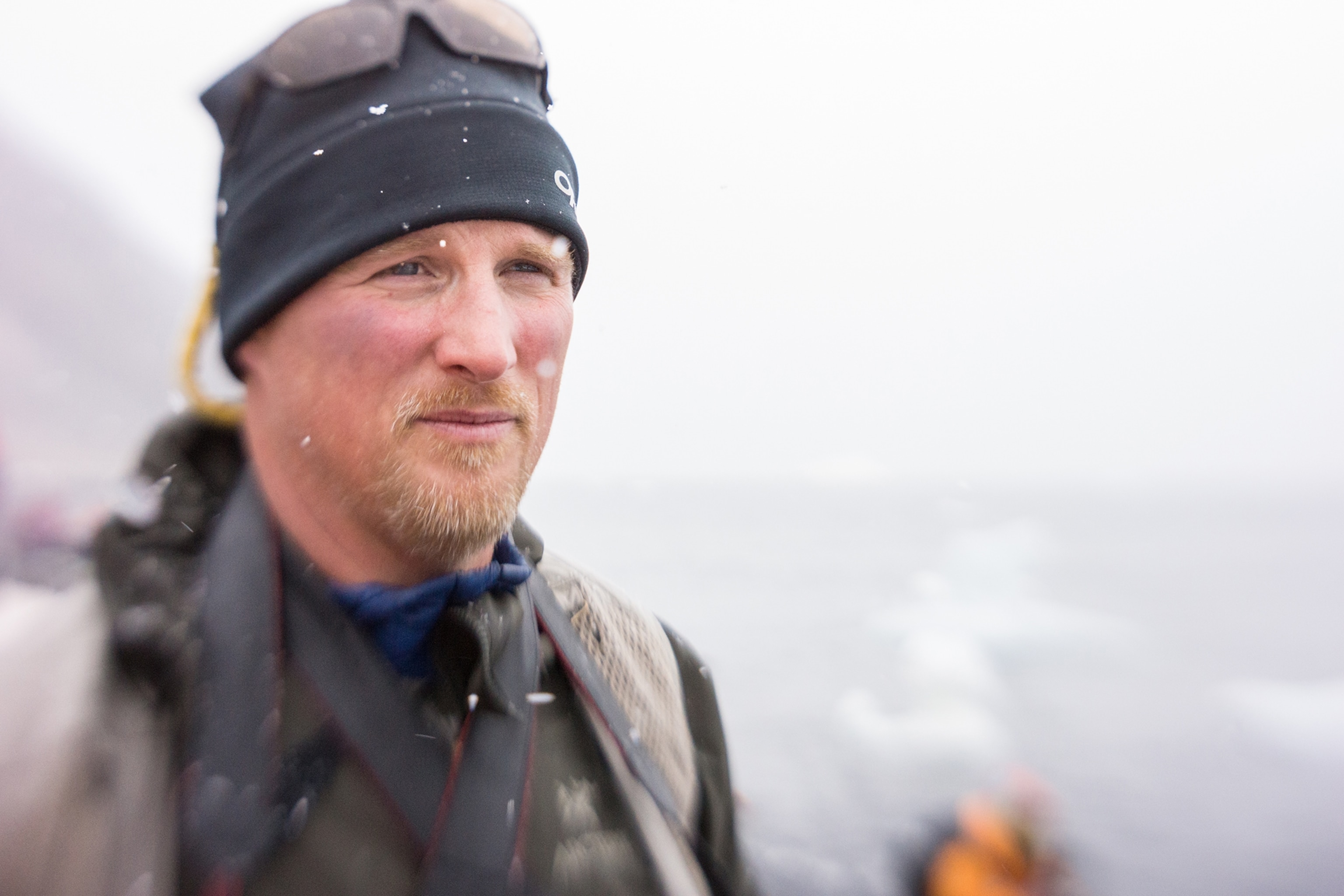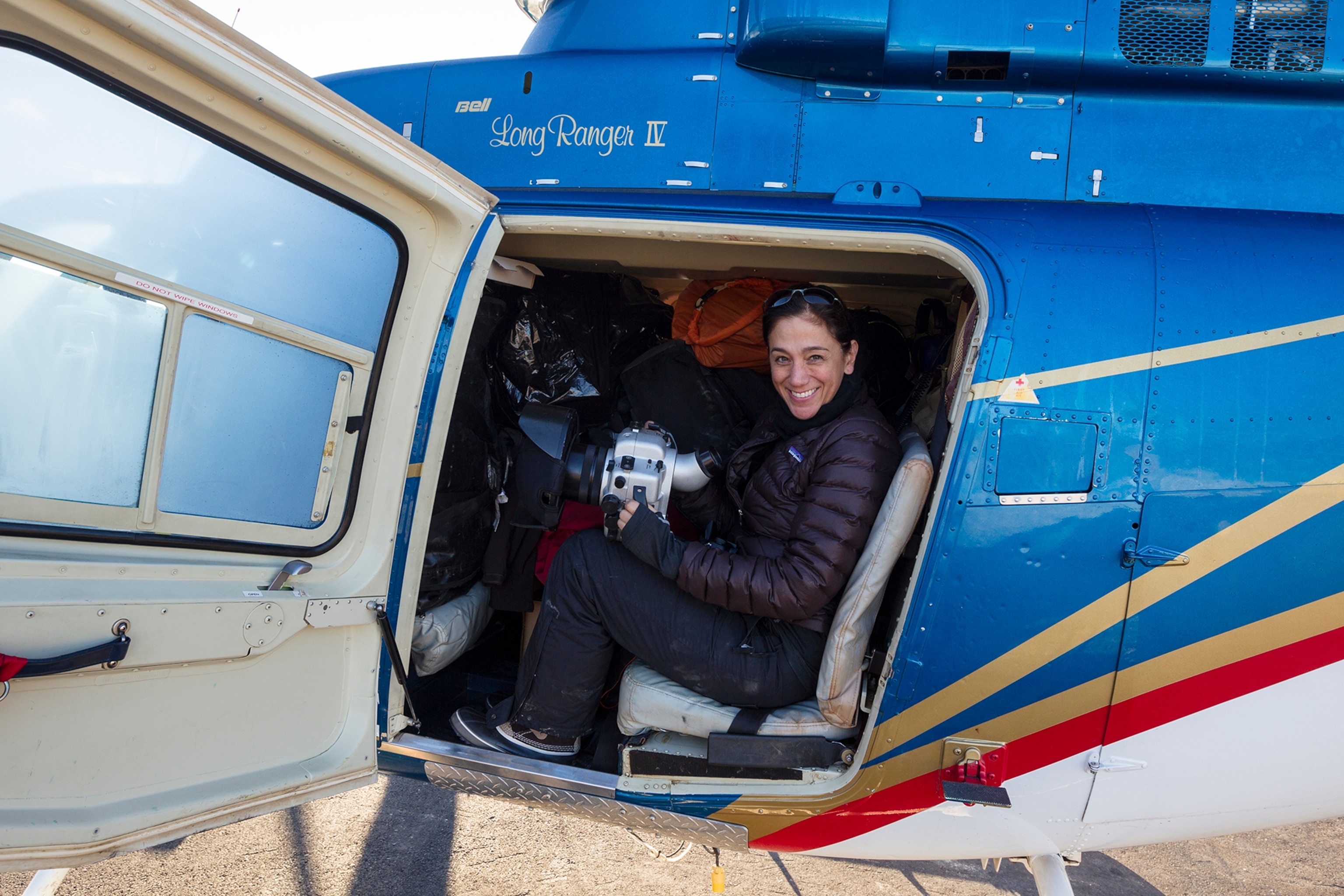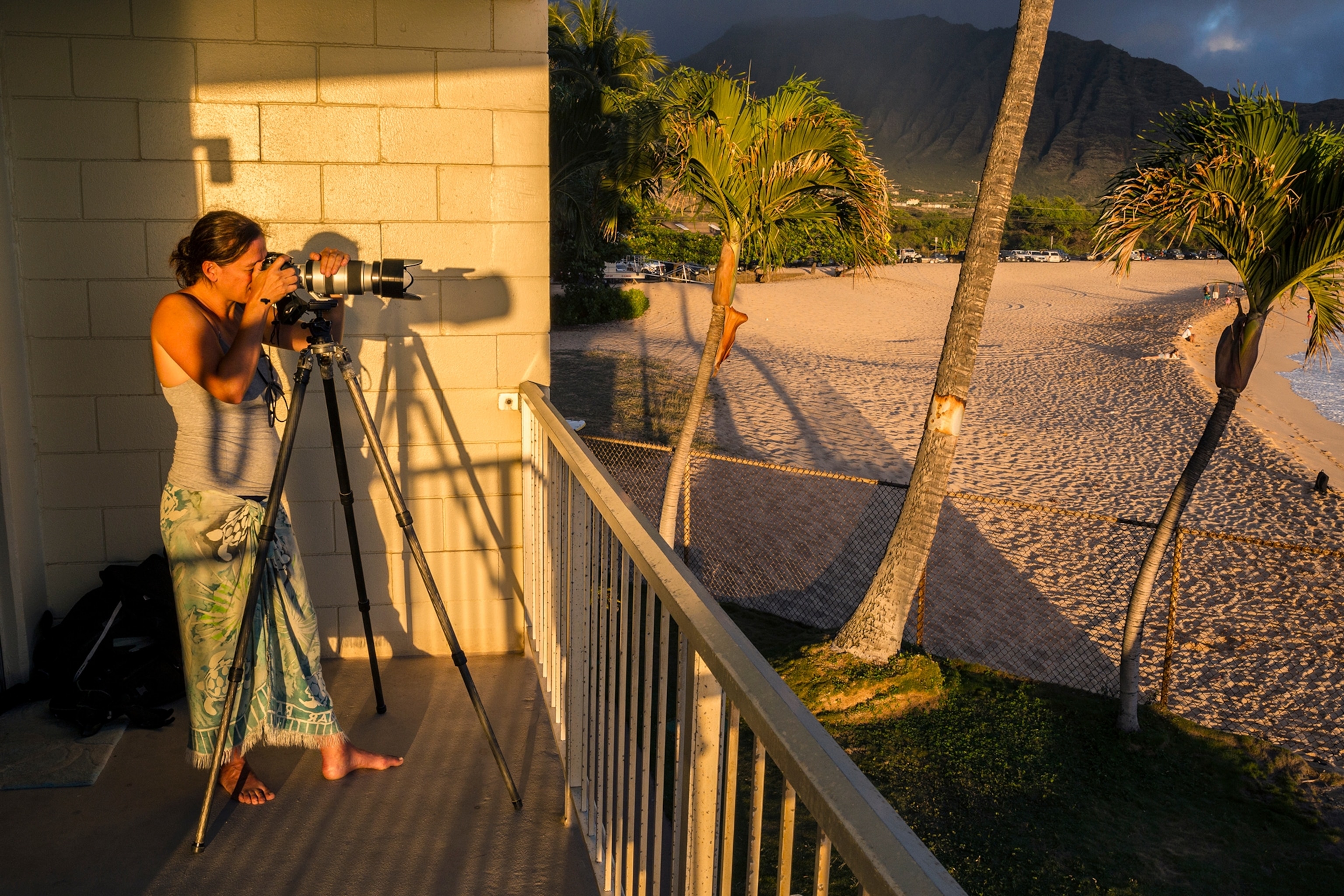These Wildlife Photographers are Merging Storytelling and Science
Cristina Mittermeier and Paul Nicklen are working to create and protect healthy oceans through powerful imagery.
In December 2017, Cristina Mittermeier and Paul Nicklen released a video on their social media channels as well as through National Geographic of a starving polar bear in the Canadian Arctic. The emaciated bear was filmed rummaging through a garbage can and finding nothing. He stumbled and laid down, appearing to resign himself to an impending death.
Both National Geographic photographers are also scientists—marine biologists with a background in conservation work.
The pair were in the arctic looking for effects of climate change when they happened upon the dying bear. They broke out their cameras. Nicklen said it was “the most heartbreaking thing” he’d ever seen in his long career of photographing wildlife in polar regions.
“We're all scared of climate change,” says Mittermeier. “We're angry at the lack of activity around solving this global problem, and I think the bear represented how we all feel about this issue.”

Dubbed by media the “face of climate of change,” the resulting footage of the emaciated bear went viral.
According to the news agency that managed the video’s distribution, the footage may have reached an incredible 2.5 billion people in just two weeks.
“We were in Nairobi for Christmas and people approached us in the airport to thank us for the polar bear video,” said Nicklen, who couldn’t believe he was even personally recognized, let alone that the video had touched people so far away. “We’ve met people who said they couldn’t get out of bed for 24 hours after seeing the video because they were so depressed. Some people openly cried. Some got angry at politicians and industry. Some even got angry at us.”


Photography with a Purpose
If any meaning is to be ascribed to the bear’s suffering, perhaps it’s that this video may have done more to advance the urgency of climate change than any other story of 2017. It’s one of the reasons Mittermeier and Nicklen are being recognized as Adventurers of the Year.
“Paul and Cristina have this organic passion for their work,” says climber Mike Libecki, who nominated the duo for this honor. “They spend years working to get these stories, and they’re absolutely crushing it, using all the channels to get people to wake up. They’re getting people emotional, and we need them now more than ever.”
The video was not without controversy. Nicklen and Mittermeier were castigated for not doing more to save the bear’s life, though feeding bears is illegal in Canada. Even if it weren’t, they didn’t have the “400 pounds of seal meat” Nicklen says would’ve been required to satiate the animal, not to mention the protection they would’ve needed to safely approach a hungry predator.


Others criticized the video’s implication that climate change was directly to blame for the bear’s condition—a critique that the Nicklen and Mittermeier openly concede.
“We put out the caption saying we can't say for sure this is caused by climate change,” says Nicklen. “We woke up the world to a lot of anger—and a lot of deniers. We just took a major beatdown at that point.”
Scientists have predicted that disappearing ice, where seal populations gather, will make it harder for polar bears to hunt—potentially leading to their extinction within the next 100 years. When animals lower down the food chain go hungry, they’re often eaten by predators before actually dying of hunger. Polar bears, however, are unique in that famine actually would lead to the kind of prolonged anguish captured in Mittermeier and Nicklen’s video.
“Whether it was caused by, in this case, climate change, or not, we don't know, we can't prove it,” says Nicklen. “This bear may have been sick or injured. But … this is what a starving bear looks like.”





Merging Science and Storytelling
Based out of Vancouver Island, British Columbia, Mittermeier, 51, and Nicklen, 49, are partners in life and the founders of SeaLegacy, an organization committed to protecting oceans. In some ways the polar bear video not only came to signify a strong message about climate change, it also represented a tension the two conservationists sometimes feel about their roles walking between the worlds of hardcore science and visual storytelling.
“I spent months if not years writing scientific papers for peer-reviewed journals,” says Mittermeier. “And then you realize that that information doesn't have much impact.”
Says Nicklen, “If we are going to succeed in conservation, we need to reach people emotionally. We need to break down the walls of apathy. And that’s not going to happen just through sharing scientific data.”
Mittermeier and Nicklen, who have 789,000 and 4.1 million followers on Instagram, respectively, view social media as one of the most important tools they have to make change.
“Once you find the formula, you become a big media machine,” says Nicklen. “You can be just a small group working very efficiently, very inexpensively, and you can make a big change.”
They point to several successful campaigns they’ve worked on over the years, including helping to stop the construction of an 1,100-mile oil pipeline through British Columbia, as well as preventing oil exploration from going forward in coastal regions in Norway.
“The thing to understand about conservation and environmental work is that it almost never happens in a matter of days or weeks,” says Mittermeier. “It is always a grinding process of years. The best part of our jobs is the opportunity to inspire people to not give up.”
“The only emotion bigger than fear is hope,” says Nicklen. “People almost want to give up right now. They're so frustrated, and they're looking for leadership. And if you can provide that, they’ll get behind you. That’s why we we have to keep fighting and charging.”
Follow Cristina Mittermeier and Paul Nicklen's work on their Instagram accounts @cristinamittermeier and @paulnicklen and at their foundation, SeaLegacy.
You May Also Like
Go Further
Animals
- Orangutan seen using plants to heal wound for first timeOrangutan seen using plants to heal wound for first time
- What La Palma's 'lava tubes' tell us about life on other planetsWhat La Palma's 'lava tubes' tell us about life on other planets
- This fungus turns cicadas into zombies who procreate—then dieThis fungus turns cicadas into zombies who procreate—then die
- How can we protect grizzlies from their biggest threat—trains?How can we protect grizzlies from their biggest threat—trains?
Environment
- What La Palma's 'lava tubes' tell us about life on other planetsWhat La Palma's 'lava tubes' tell us about life on other planets
- How fungi form ‘fairy rings’ and inspire superstitionsHow fungi form ‘fairy rings’ and inspire superstitions
- Your favorite foods may not taste the same in the future. Here's why.Your favorite foods may not taste the same in the future. Here's why.
- Are the Great Lakes the key to solving America’s emissions conundrum?Are the Great Lakes the key to solving America’s emissions conundrum?
- The world’s historic sites face climate change. Can Petra lead the way?The world’s historic sites face climate change. Can Petra lead the way?
History & Culture
- Meet the ruthless king who unified the Kingdom of Hawai'iMeet the ruthless king who unified the Kingdom of Hawai'i
- Hawaii's Lei Day is about so much more than flowersHawaii's Lei Day is about so much more than flowers
- When treasure hunters find artifacts, who gets to keep them?When treasure hunters find artifacts, who gets to keep them?
Science
- Why ovaries are so crucial to women’s health and longevityWhy ovaries are so crucial to women’s health and longevity
- Orangutan seen using plants to heal wound for first timeOrangutan seen using plants to heal wound for first time
Travel
- A slow journey around the islands of southern VietnamA slow journey around the islands of southern Vietnam
- Is it possible to climb Mount Everest responsibly?Is it possible to climb Mount Everest responsibly?
- 5 of Uganda’s most magnificent national parks
- Paid Content
5 of Uganda’s most magnificent national parks






